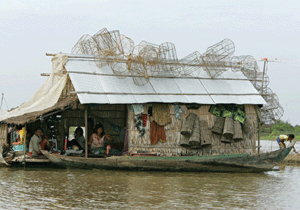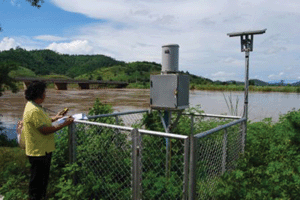WHAT KIND OF ADAPTATIONS WILL
MEKONG COUNTRIES
HAVE TO MAKE?
Each MRC Member Country will have to make different changes depending on their differing needs and resources.

These are some of the ways in which the MRC is helping governments to prepare and adapt:
- The MRC will provide tools for advising and instructing policy makers. It is not enough simply to "add in" a climate change component late in a project's development. Research, interventions; economic, social and health considerations; education; outreach; policies and programmes must consider the possible impact of climate change from the beginning.
- The MRC will provide knowledge, data and analysis about how climate change is affecting communities and regions as well as modelling possible future impact.
- The MRC will build capacity among government, NGO and other
sectors about how to respond and adapt to this threat. It
will also raise awareness amongst the general public in both
the four Member Countries and donor countries as to the possible
consequences of climate change on the people of the region.
This will hopefully influence policy makers at different levels
in the basin and abroad.

The MRC is implementing pilots and demonstration sites for these activities in all four Member Countries. The idea is to draw on local knowledge and current adaption ideas, including ideas that can be up-scaled to the wider region. Some long term possibilities for consideration by Mekong governments could include:
- Engineering and technological options (e.g. dykes and drainage systems, floating houses etc.);
- Traditional local strategies;
- Social responses (e.g. resettlement, "autonomous" actions and gender responsiveness);
- Land use planning (e.g. zoning and development controls);
- Economic instruments (e.g. subsidies and tax incentives);
- Natural systems management (e.g. rehabilitation, enhancement);
- Sector specific adaptation practices (e.g. agriculture - crop varieties, planting patterns and irrigation regimes); and
- Institutional and administrative innovations.
E-Newsletters
Choose a newsletter: